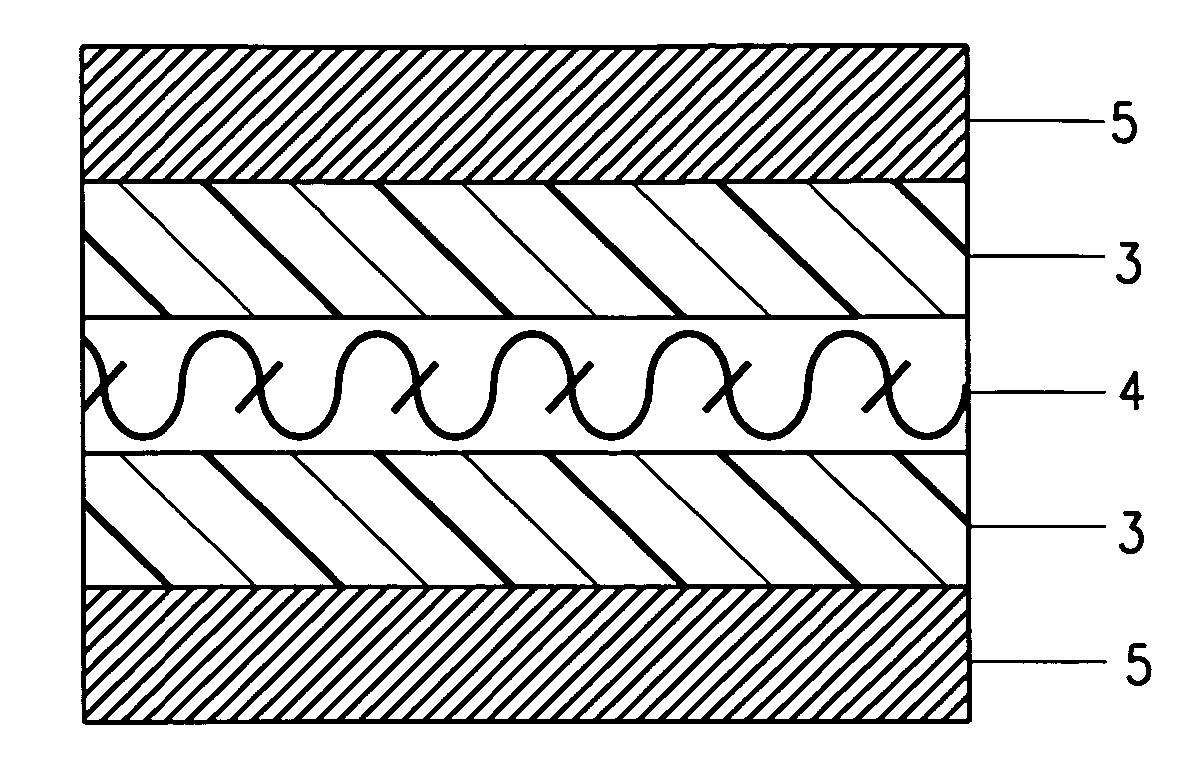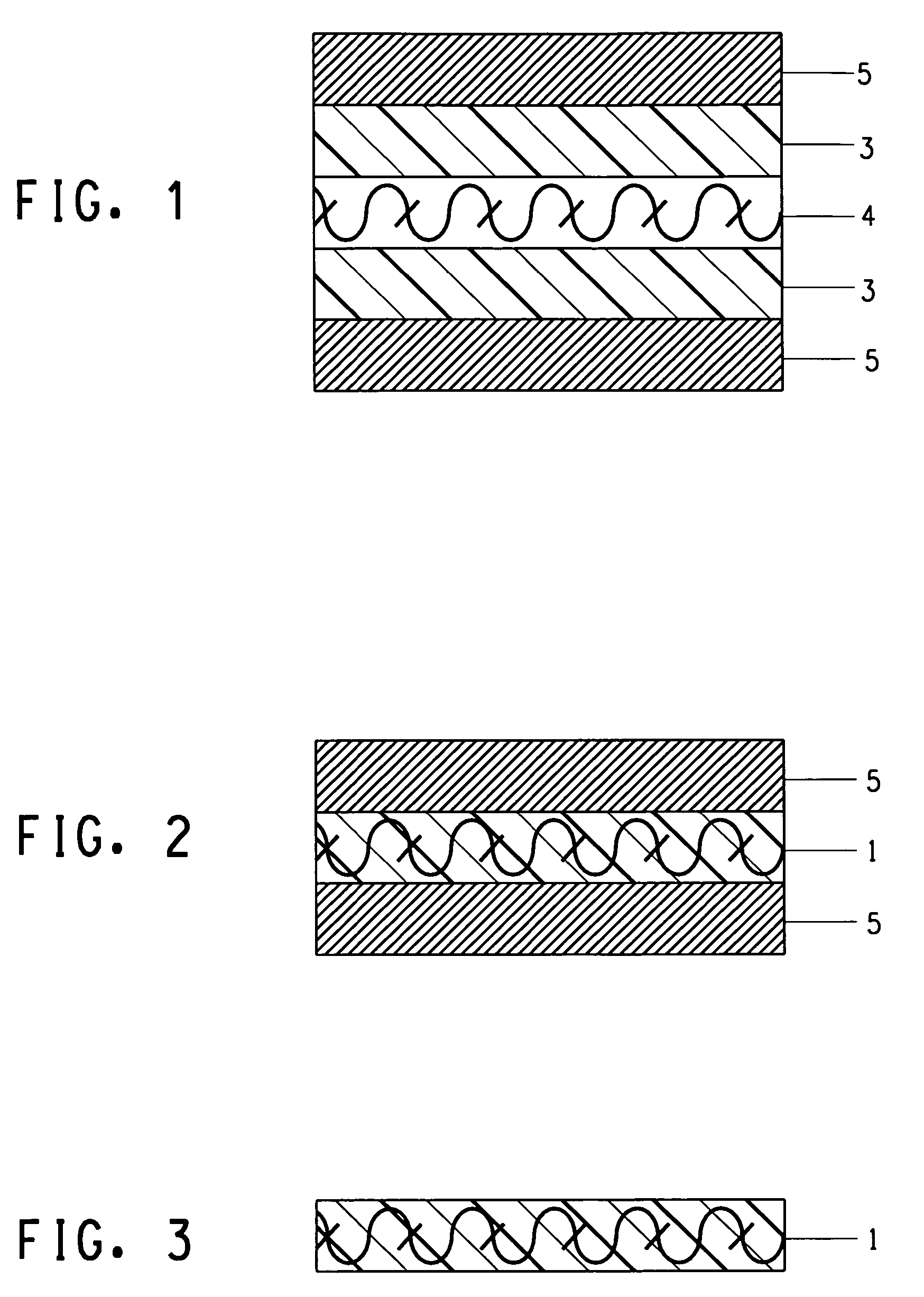Fluoropolymer-glass fabric for circuit substrates
a technology of fluoropolymer glass and circuit substrate, which is applied in the direction of woven fabrics, textiles and paper, synthetic resin layered products, etc., can solve the problems of defective printed circuits, increased circuit substrate costs, and similar complexity of circuit substrates of u.s. pat. no. 4,886,699, and achieve the effect of improving the adhesion of composite structures
- Summary
- Abstract
- Description
- Claims
- Application Information
AI Technical Summary
Benefits of technology
Problems solved by technology
Method used
Image
Examples
application examples
[0055]The present invention will be explained below in more detail with reference to application examples and comparative examples. The present invention, however, is not limited to these examples.
[0056]In the present invention, the various properties were measured using the following methods.
(1) Melting Point (Melting Peak Temperature)
[0057]A differential scanning calorimeter (Pyris 1 type DSC, product of Perkin Elmer Corporation) was used. 10 mg of sample powder was weighed and added into an aluminum pan. After the pan is closed by crimping, the sample powder was set in the main body of the DSC, where it was heated from 150° C. to 360° C. at a rate of 10° C. / min. The melting peak temperature (Tm) was derived from the resulting melting curve.
(2) Melt Flow Rate (MFR)
[0058]A melt indexer (made by Toyo Seiki K.K.) equipped with anti-corrosive cylinder, die and piston was used according to ASTM D1238-95. 5 g of sample powder was filled into the cylinder maintained at 372±1° C. After th...
application example 1
[0062]After melt-processable fluoropolymer PFA (product of Mitsui / DuPont Fluorochemical Co., Ltd., melting point 309° C., melt flow rate (372° C., 5 kg load) 36 g / 10 min) and a liquid crystal polymer (Zenite® 6000 produced by DuPont and having a melting temperature of 340° C. and flow temperature of 335° C.) were fully dried, they were melt blended together with a tertiary copolymer (terpolymer) of tetrafluoroethylene, perfluoro(propyl vinyl ether) (PPVE), and CF2═CF[OCF2CF(CF3)]OCF2CF2CH2OH (the functional monomer) used as the functional group containing melt-processable fluoropolymer PFA (PPVE content 3.7 wt %, said hydroxyl containing monomer content 1.1 wt %, melt flow rate 15 g / 10 min) by using a twin screw extruder to generate pellets of the fluoropolymer mixture (melt temperature 365° C.) having a melt flow rate 51 g / 10 min. The melt-processable fluoropolymer pellets had a composition by weight of melt-processable fluoropolymer PFA / liquid crystal polymer / functional group cont...
application example 2
[0065]Thermocompression was performed in the same way as described in Application Example 1 except that the lamination structure was changed to copper foil / G / T1 / G / copper foil. A fluoropolymer containing copper-clad laminate with a thickness of about 75 μm used for measuring peel strength (sample S2a) was obtained. Also, the surface of sample S2a was etched to remove the copper foil in order to obtain a sample used for measuring the dielectric constant and the linear expansion coefficient (sample S2b).
PUM
| Property | Measurement | Unit |
|---|---|---|
| frequency | aaaaa | aaaaa |
| dielectric constant | aaaaa | aaaaa |
| diameter | aaaaa | aaaaa |
Abstract
Description
Claims
Application Information
 Login to View More
Login to View More - R&D
- Intellectual Property
- Life Sciences
- Materials
- Tech Scout
- Unparalleled Data Quality
- Higher Quality Content
- 60% Fewer Hallucinations
Browse by: Latest US Patents, China's latest patents, Technical Efficacy Thesaurus, Application Domain, Technology Topic, Popular Technical Reports.
© 2025 PatSnap. All rights reserved.Legal|Privacy policy|Modern Slavery Act Transparency Statement|Sitemap|About US| Contact US: help@patsnap.com


